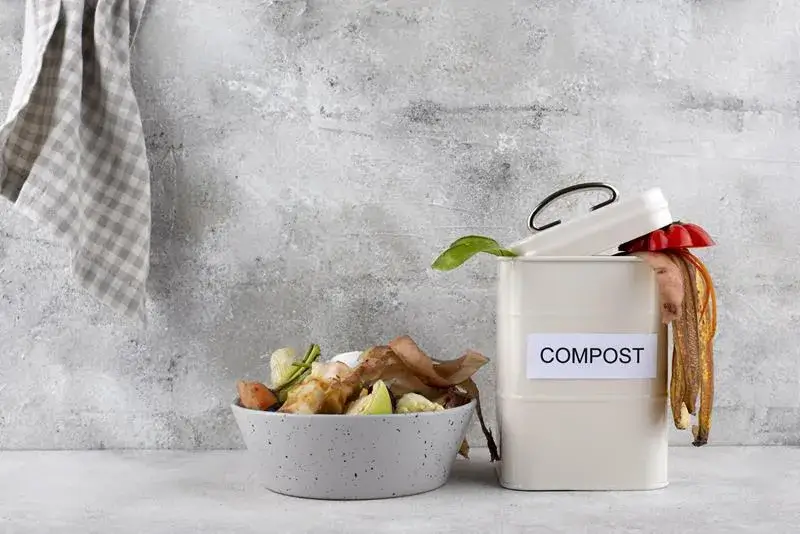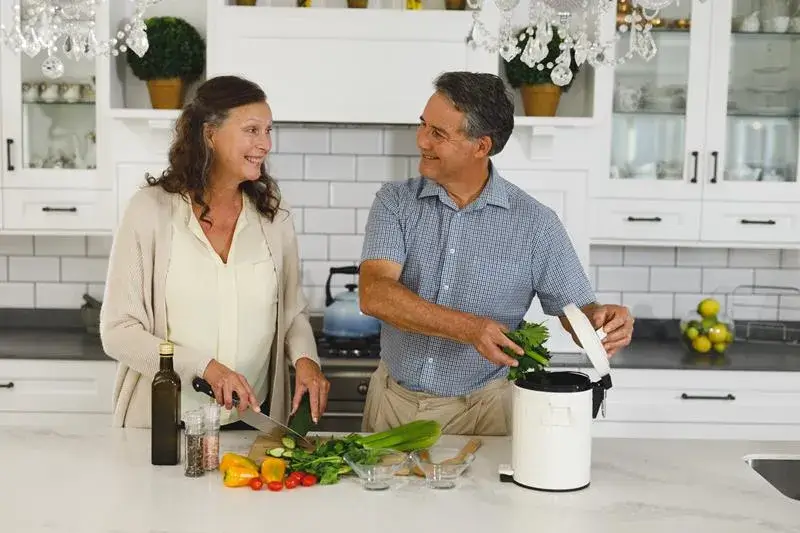The easy guide to kitchen composting
Composting in the kitchen is not just a way to get rid of waste, but an opportunity to turn everyday leftovers into a valuable resource for plants. Proper use of a composter helps avoid odors, speeds up the decomposition process and ensures quality results – all depending on what type of composter you use:
- Electric composter. Sort waste beforehand—cereals, meat, and vegetables need different processing. The device dries and crushes it into a ready substrate. After the cycle, remove or replace the carbon filter.
- Compost bin. This option requires regularity. Once every few days, the contents of the bucket should be taken out into the street compost or taken to a municipal point. The bucket filter is updated approximately once a month.
- DIY composter. Use coconut substrate (coir), paper, or sawdust. It is very important to regularly turn the contents and provide air access; otherwise, the process will slow down.
Regardless of which type you prefer, the main secret to success is regularity and proper handling of filtration and aeration.
From scraps to soil: composter types explained
In the kitchen, three primary types are used:
- The kitchen compost bucket is a basic bucket equipped with a filter that controls odor, making the collection of waste for outdoor composting easier.
- A DIY composter consists of boxes or containers, usually homemade, where organic matter undergoes natural decomposition. This method is cost-effective, but is time intensive and requires consistent upkeep.
- Modern electric kitchen composters are by far the most convenient; they can transform waste into fully composted material within a few hours. However, these devices cost more since they need electricity.
Ultimately, how a composter is selected is a function of one’s lifestyle and habits: some prioritize ease of use and minimal expenses, while others lean toward advanced technology that offer speed and efficiency in waste processing.

Key factors for your ideal waste disposer
It is vital to think about compost size along with the space available in your kitchen. If your kitchen is compact, countertop models are available, but in spacious kitchens or homes with a garden, outdoor models are available as well. These can process waste at a time.
Controlling odor is crucial, especially in apartments. Electric models are faster, but DIY options are slower, as they take days to weeks to process, but don’t need electricity. However, all in all, control of smell along with carbon filters is essential.
Type of compost also matters as some take a few days to weeks. Balance DIY and electric options in the kitchen as use in apartments require quiet modes. Make all options available to ease control noise, as comfort in apartments. Finally, factor in cost, including purchase price, electricity, filters, and additives, to ensure your composter is a helpful, worry-free addition to your kitchen.
Top picks: finding the best waste recycler
There are many kitchen composters on the market, and each model has its own features that make it suitable for different conditions and habits. We have collected top picks for every taste.
Type: Electric
Price: $180 *
Pros: quickly recycles waste, compact and quiet.
Cons: small container volume.
Type: Electric
Price: $299.99 *
Pros: different operating modes, attractive appearance.
Cons: expensive consumables (filters).
Type: compost bin
Price: $28.99 *
Cons: small capacity, filter must be replaced periodically.
Type: Compost Bin
Pros: Easy to clean, compact.
Cons: Small volume, suitable only for small volumes of waste.
Type: DIY composter
Pros: everything to get started included, good for indoor use.
Cons: can be bulky for smaller kitchens.
* (prices are valid for August 2025)
A kitchen composter is not only a good-looking gadget, it is also a good way to reduce waste and do your part for the environment. When deciding between a bucket, DIY or an electric compost you should think about your habits, your space and your budget, that way composting will be a simple and effective step towards an environmentally friendly lifestyle.
FAQ
Are odors controlled?
Yes, when using filters or drying technology, odors are minimal.
Can waste be left overnight?
Yes, modern composters are hermetically sealed, and waste can be stored until the next start.
What to do with the semi-finished Lomi Earth product?
It can be added to street compost or used as a soil additive after ripening.
How much electricity does an electric composter use?
On average 0.5–1 kWh per cycle, which is comparable to using a microwave.

Author

Alexandra Mukhina
Content writer on https://rythmoftheworld.com Experienced linguist and translator with a knack for crafting and refining diverse content. My goal is to produce engaging, informative texts that captivate readers. Passionate about reading, music, traveling, and exploring new avenues of personal growth.



